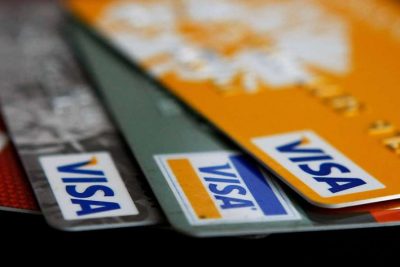Introduction 
Visa, the world’s largest company processing electronic payments, was initially formed as a Bank of America initiative in 1976. From the time the entity became Visa International in 1977, investors have been waiting for the privately-held giant to go public. Incidentally, they’d have to wait 31 years before they got the chance. When Visa finally went for an IPO in the spring of 2008, everyone was expecting a huge windfall & they were right.
Prior to its IPO, Visa was owned by a consortium of several thousand banks and marketed its services globally. Additionally, the company went through a major corporate restructuring which completed in 2007. The two entities that remained were Visa Inc. and Visa Europe. In November 2007, Visa Inc. filed its prospectus with the SEC. In the IPO, 406 million shares were offered, about half the firm’s equity value. The price range in the prospectus was $37 to $42. But there was enough demand in the market to price it at $44 and an additional $812 million was raised because of the increased price. This made the overall initial offer equivalent to $17.9 billion. On March 19, Visa’s stock opened in the stock market at 59.50 per share whereas major US index fell by 2% that day. JPMorgan Chase and Goldman Sachs were joint underwriters for the issue along with 17 other underwriters as well as financial institutions. An offer giving the underwriters the right to take up 40.6 million additional shares was also in the offering. Underwriters exercised this option and took the overall capital raised to $19.1 billion. This made the IPO biggest ever in US history then.
This also made the company top the list of most amount of money “left on the table” in the IPOs as per Ritter’s website. The dollars left on the table amounted to $ 5,075,000,000 for VISA.
Major decisions and reasons behind them
Visa went for the IPO for two major reasons. Firstly, Visa wanted to cover the damages from the anti-trust violations that the owed the bank. As a result, $3 billion was placed in an escrow account to pay the damages. The second purpose was to infuse cash into its partner banks. Essentially all the remaining amount from the IPO ended up with the banks through repurchase of stocks from them. The banks were in need of the extra capital. At the time, Visa was owned by more than 13000 US banks. Slightly more than half the shares were being offered to the public.
The decisions facing Visa before the IPO were:
-Pricing:
Visa priced its shares at $44 for IPO of stock, above the expected price of $37 to $42 projected in previous company filings with the SEC, as stated by one of the lead underwriters, J.P. Morgan Chase & Co. Such an aggressive pricing at a time of global downturn and slump in markets all over the world may seem counter-intuitive. However, Visa had an excellent grasp of the opportunities in their business. According to analysts in Renaissance Capital, Visa priced the issue above the proposed range because there was plenty of demand, as was proven by the rapid over-subscription of the IPO.
-Timing :
Timing was one of the biggest factor which VISA had to consider for its IPO. In 2008, financial markets were going through great turmoil, yet VISA decided to launch its IPO in that period. VISA had already spent 2 years in restructuring their division and they were in desperate need of cash. When the IPO market was drier than desert and with recent collapse of major investment bank, IPO of a financial firm could have flopped big time. Yet, investors fought for a chance to bite a piece of the IPO.
VISA’s IPO was targeted to become one of the biggest in US history, giving a big payday to its former bank owners. Also, 41 brokers who underwrote the IPO were about to net around $500 million in fees. This was like an oasis for the financial sector. Considering the economic situation, Underwriters would have had huge motivation and push to make this IPO successful. This could be one of the reason behind choosing such a time for IPO by VISA.
Meanwhile, home equity credit lines were drying up. American consumers were more reliant on credit cards than ever. This was complemented with consumers switching to plastic money from cash. All these reasons made business model of VISA promising and made them to go ahead with IPO in 2008.
Another major reason which comes up is antitrust liability. Apart from the $2.1 billion antitrust settlement for American Express, Visa also had a significant amount of potential liabilities coming its way. This made it necessary to raise money as quickly as possible.
-Stock Exchange Location:
No evidence was found whether Visa had considered alternate stock exchanges to list. It ultimately listed in NYSE (NYSE: V). The Visa IPO creates an unusual 3 stock-class capital structure, which was allowed in the NYSE.



